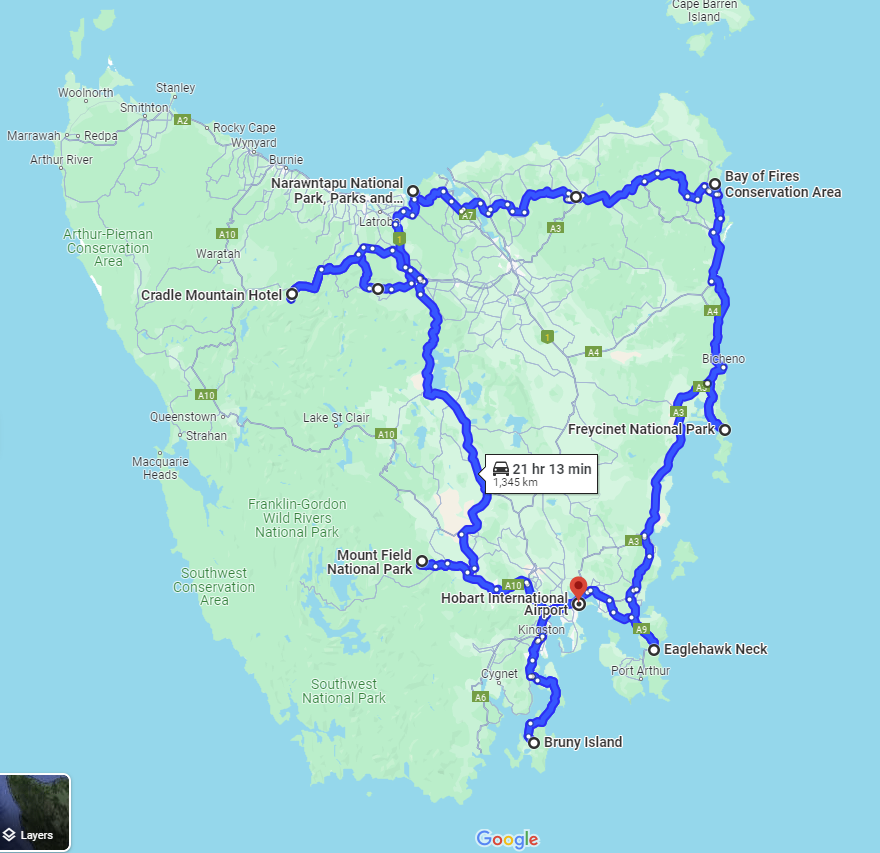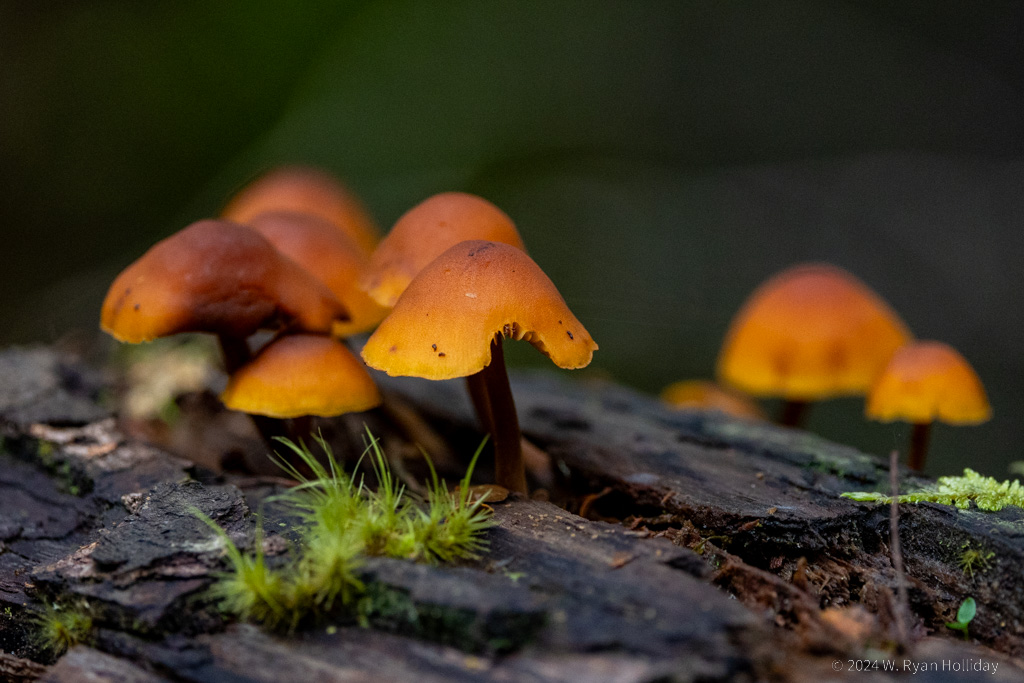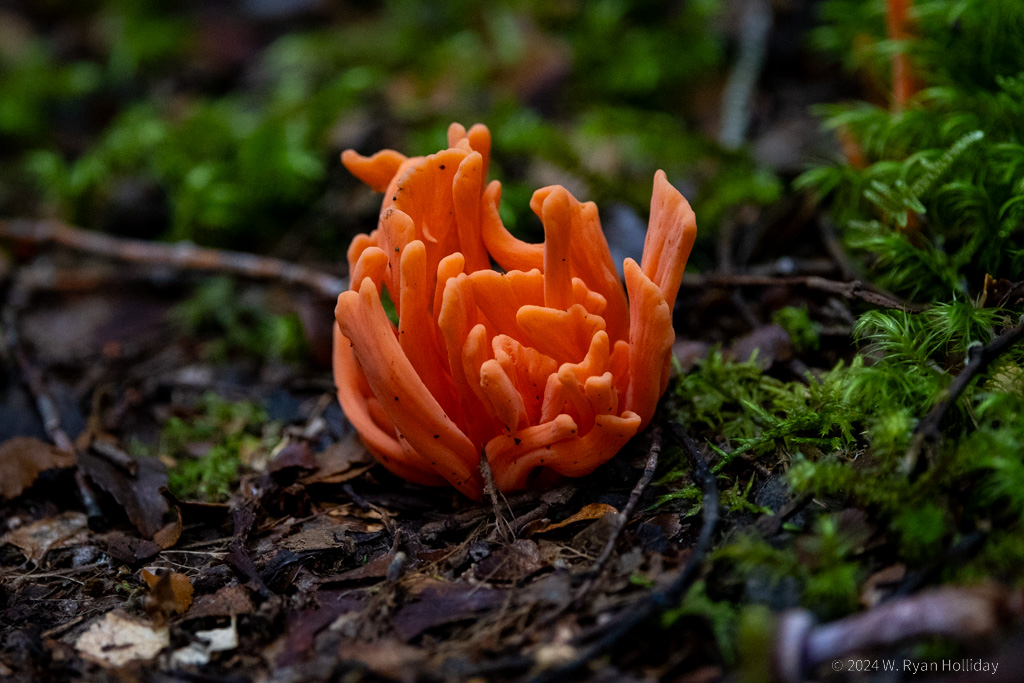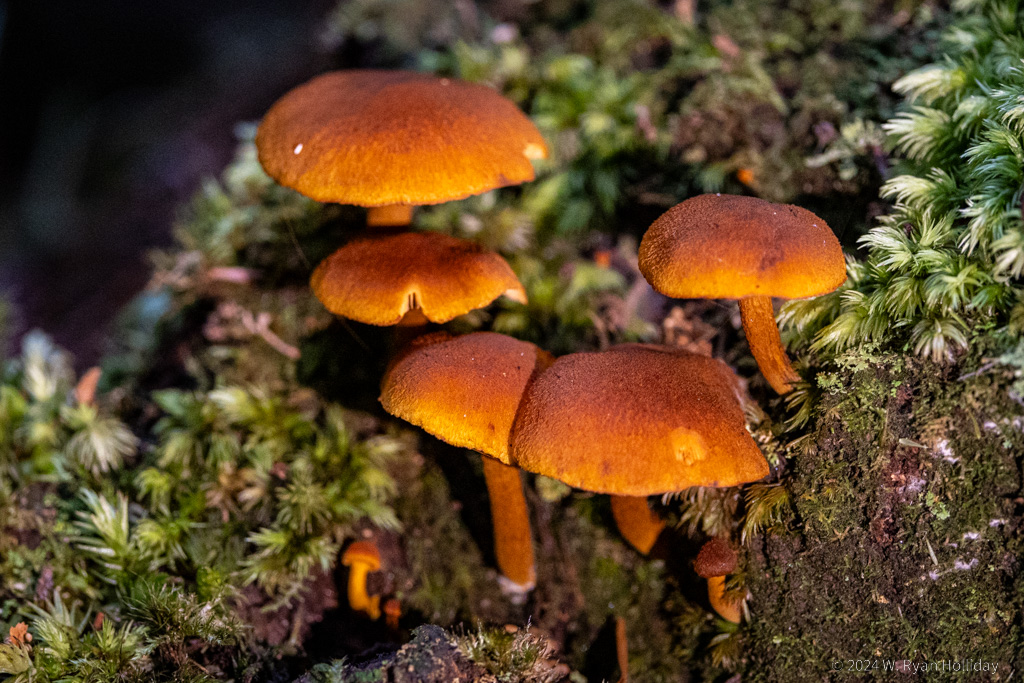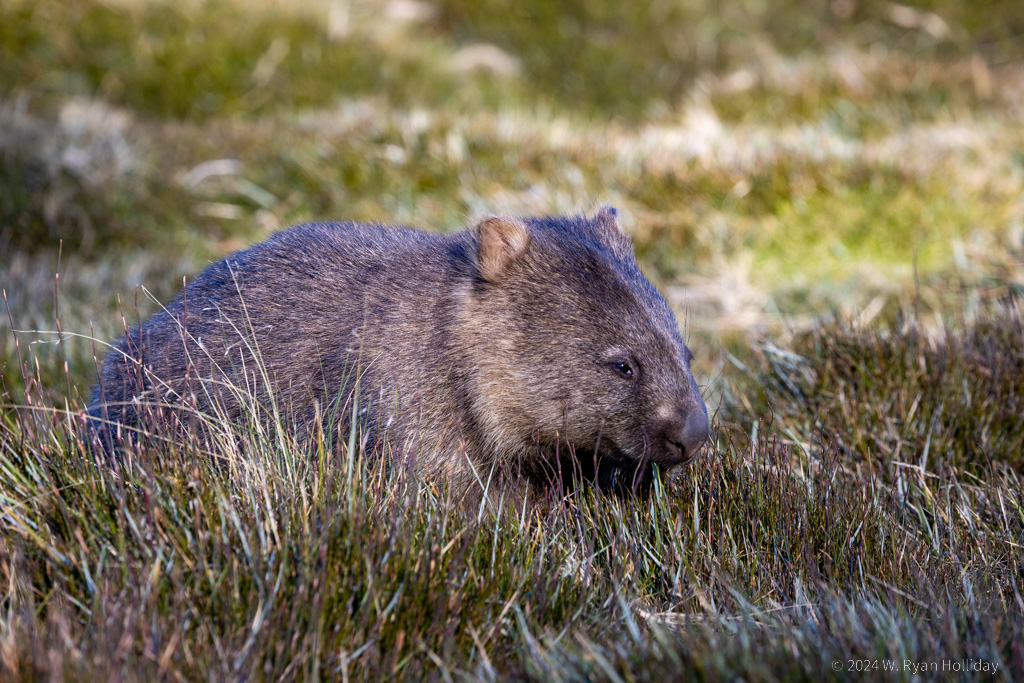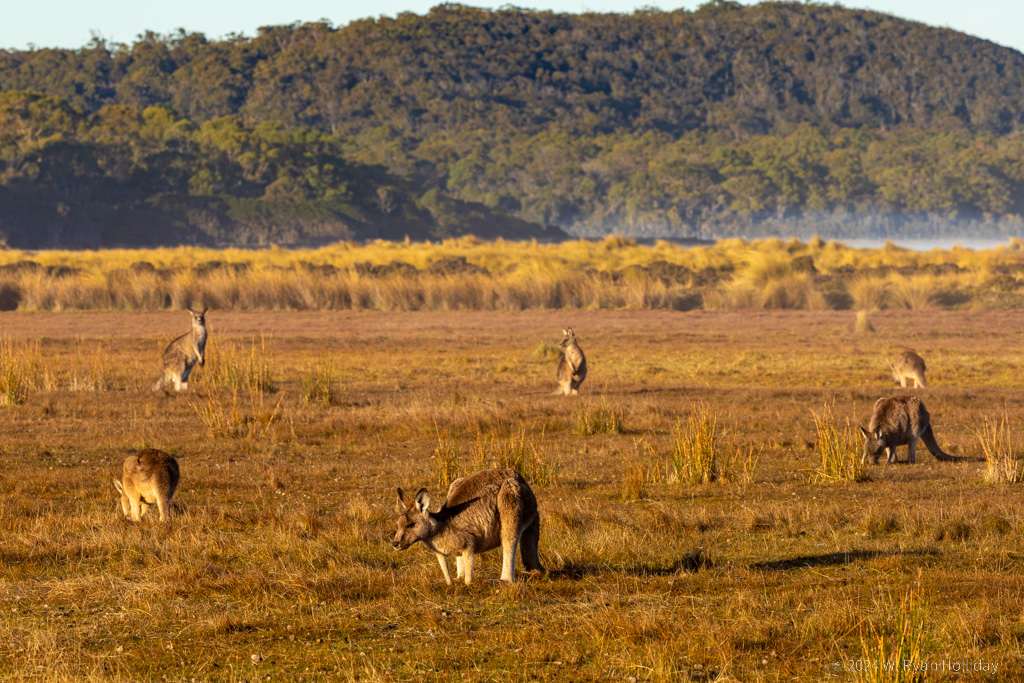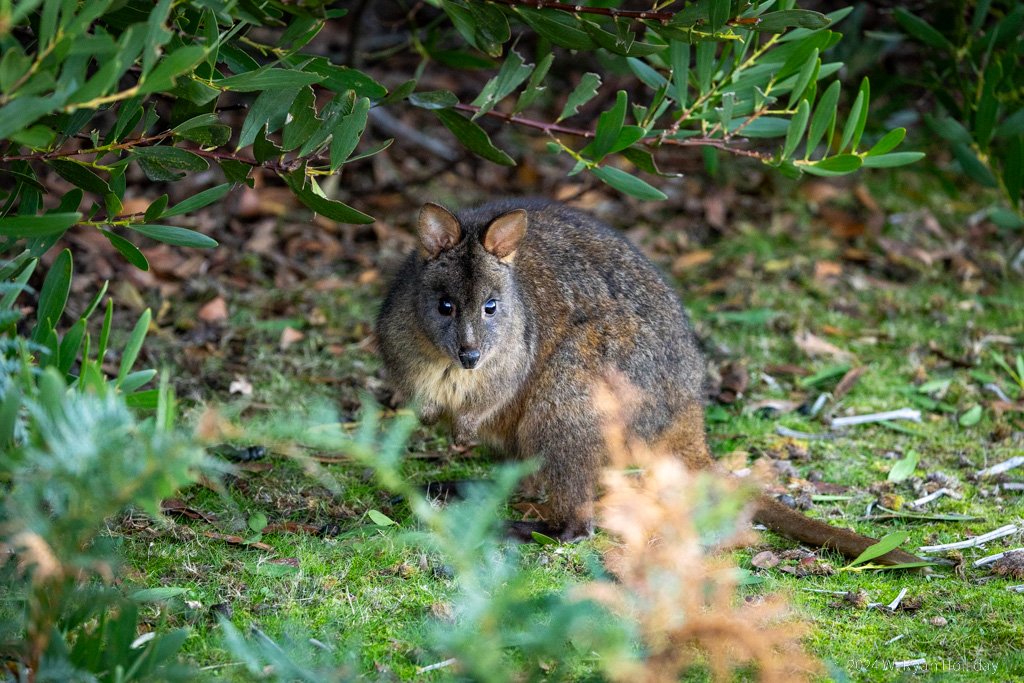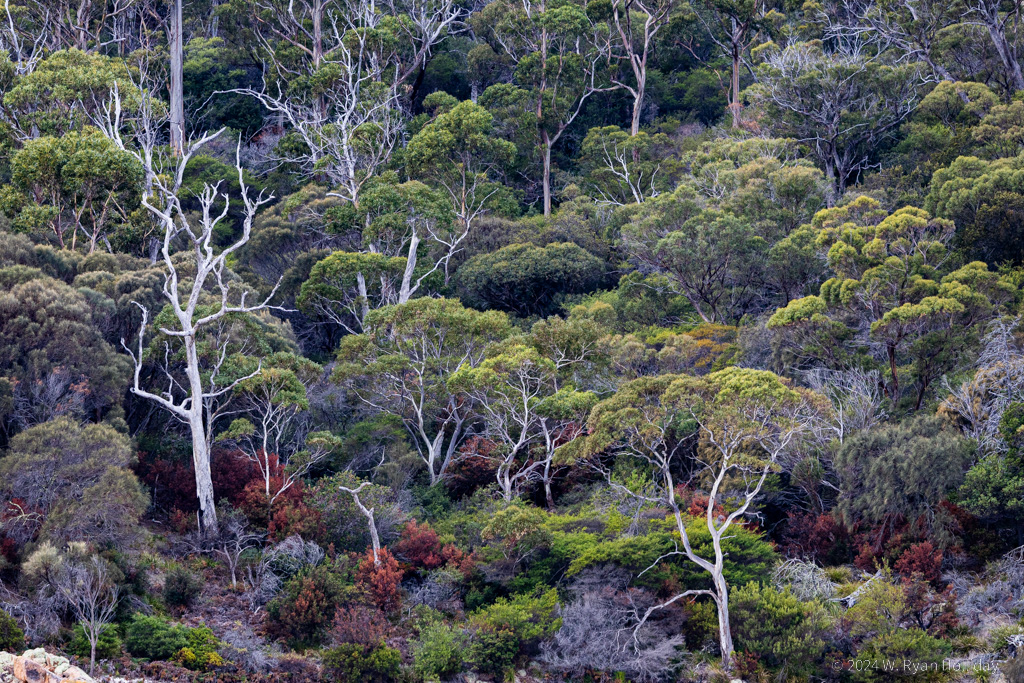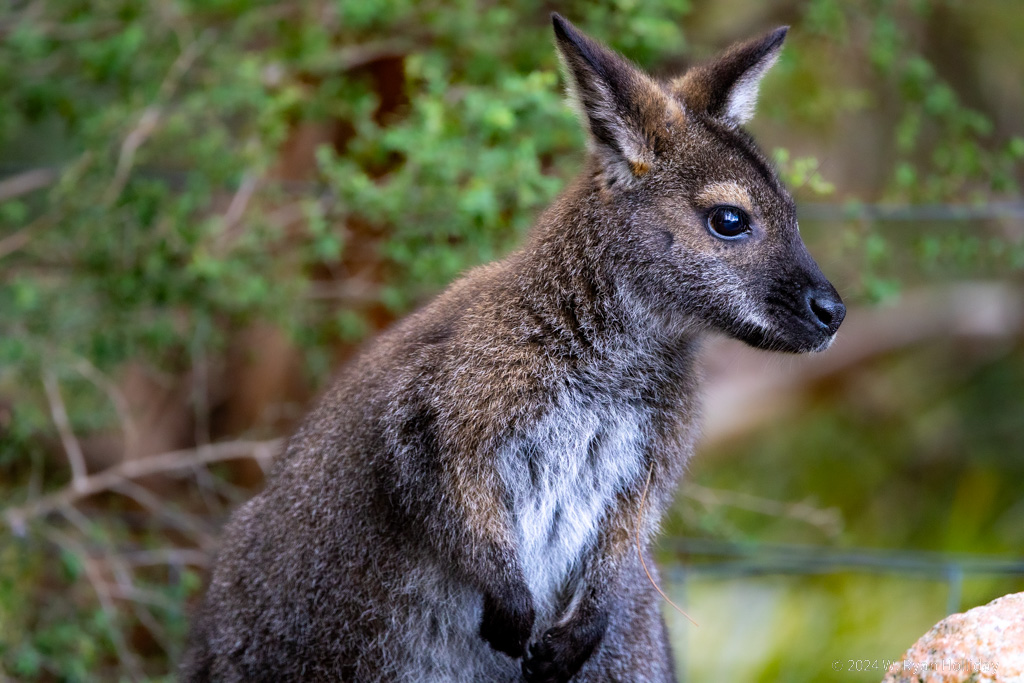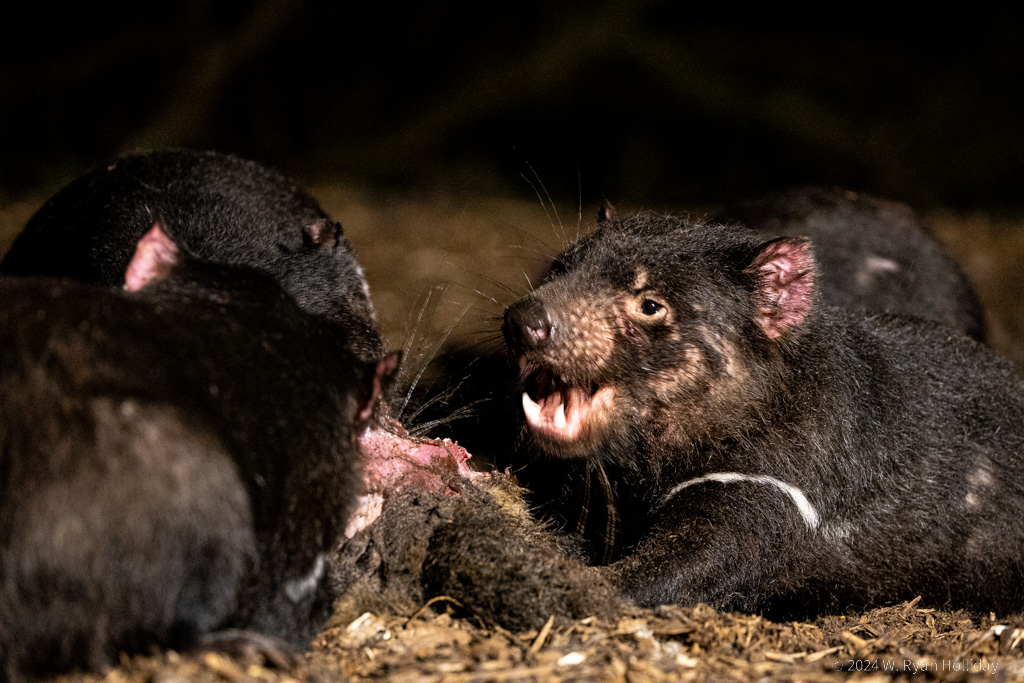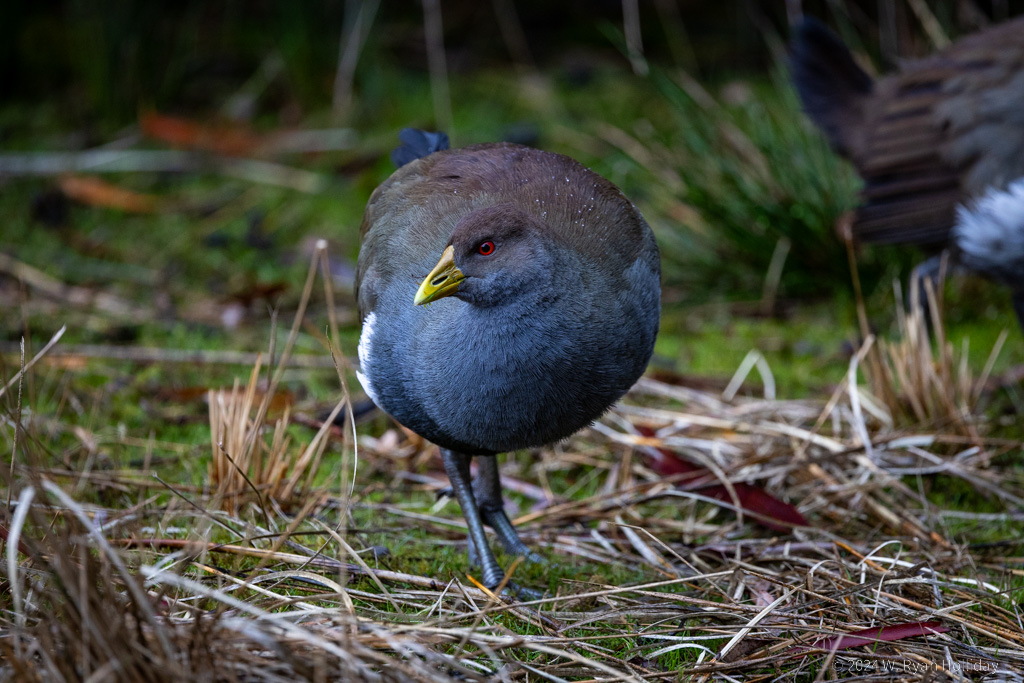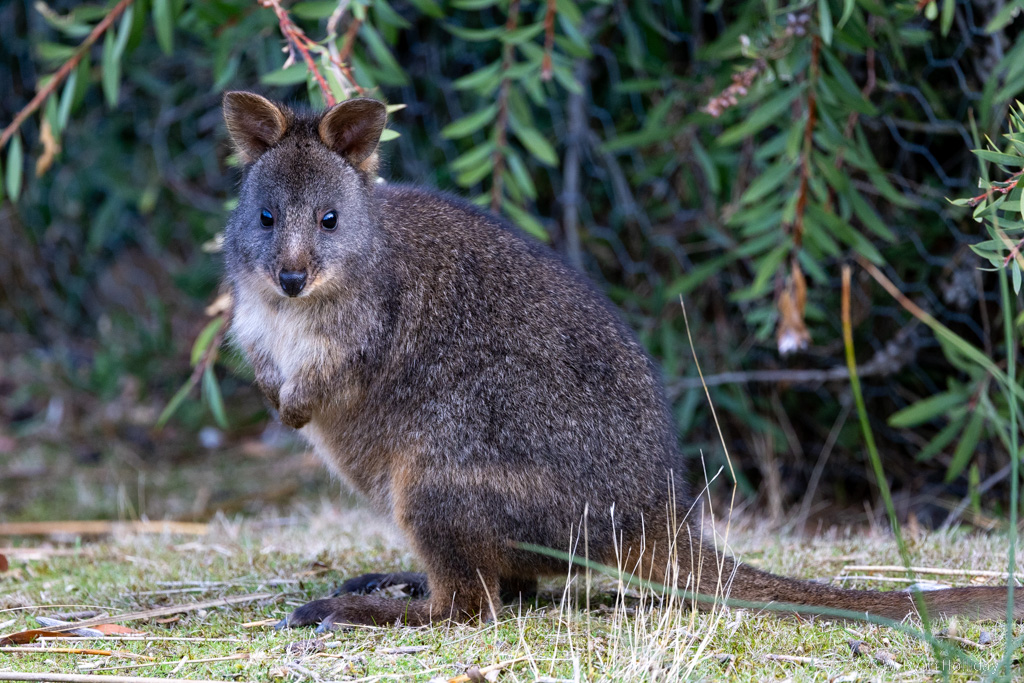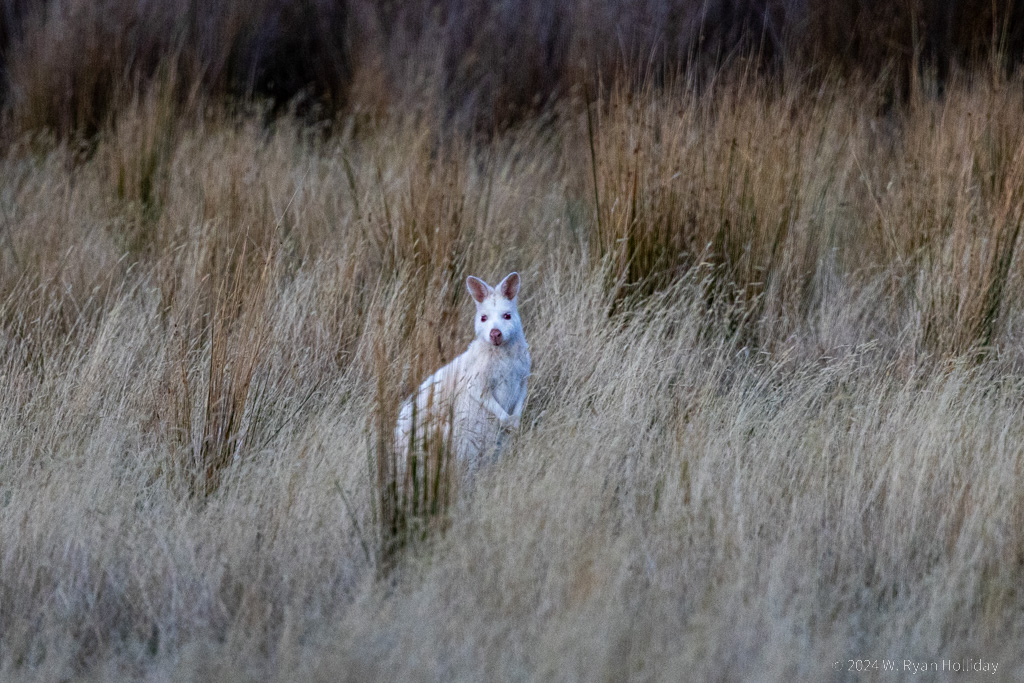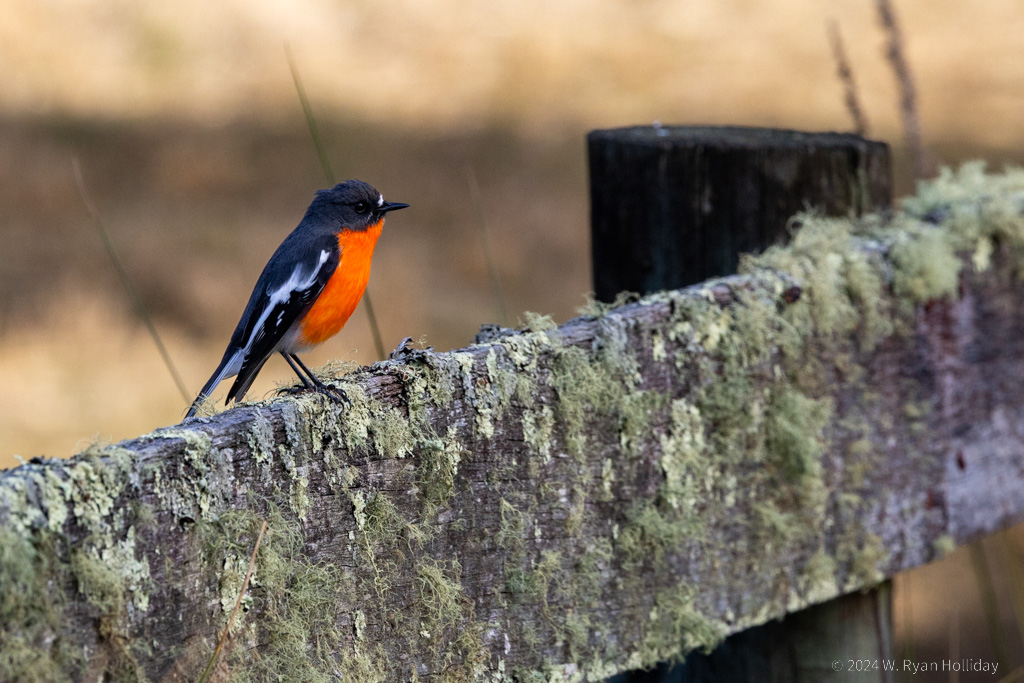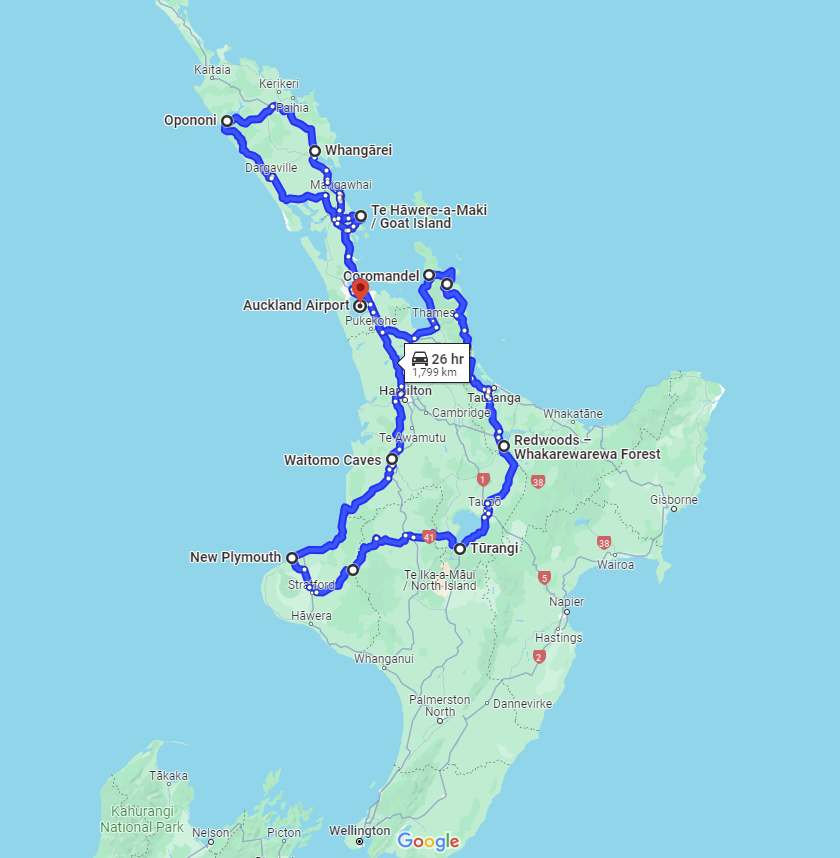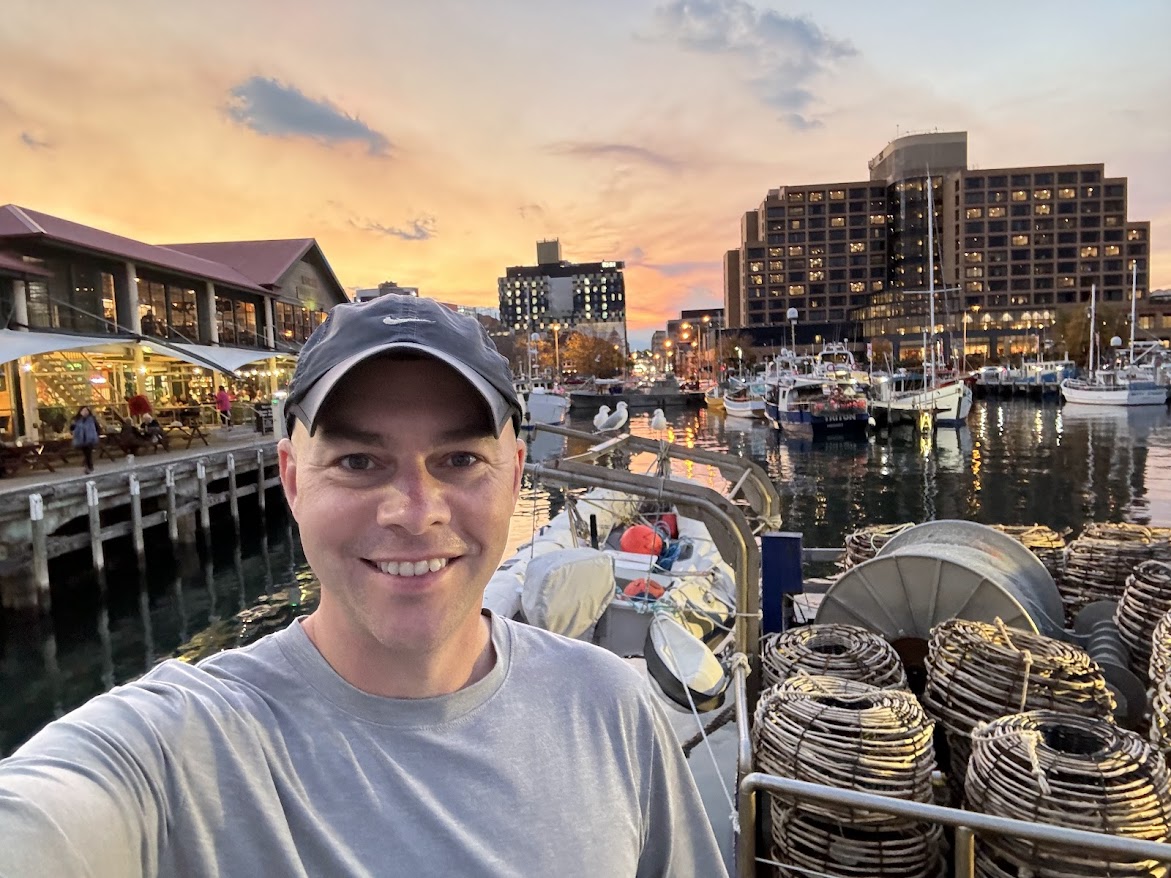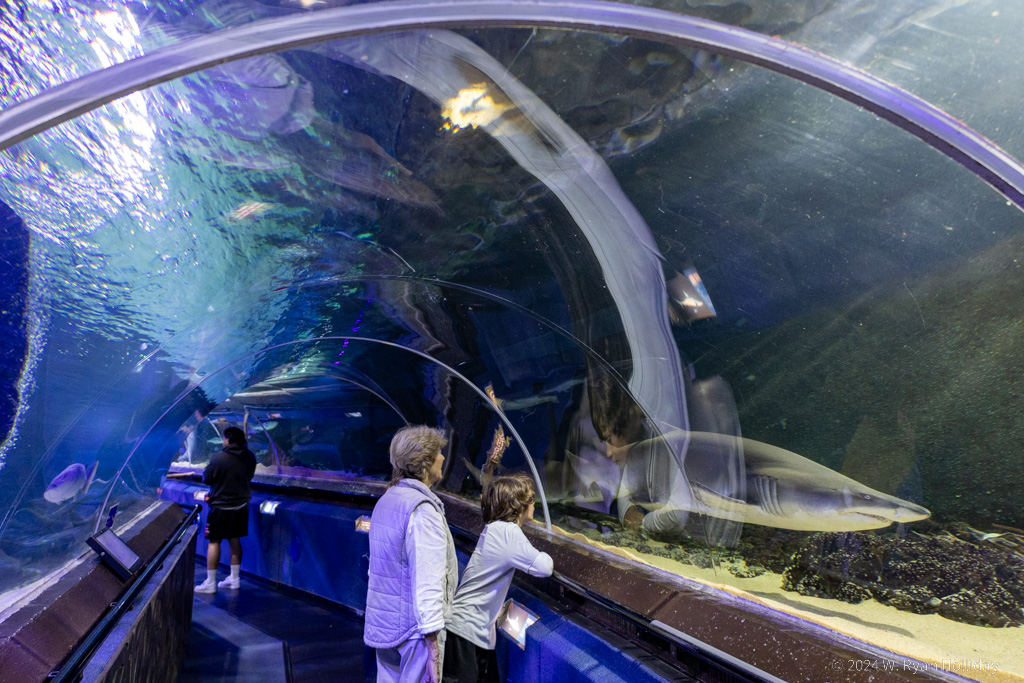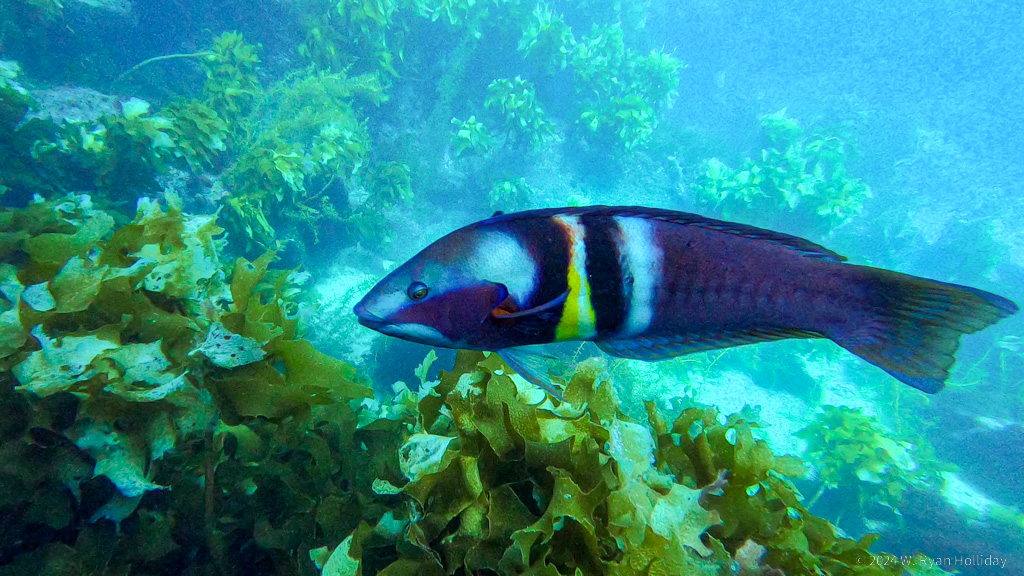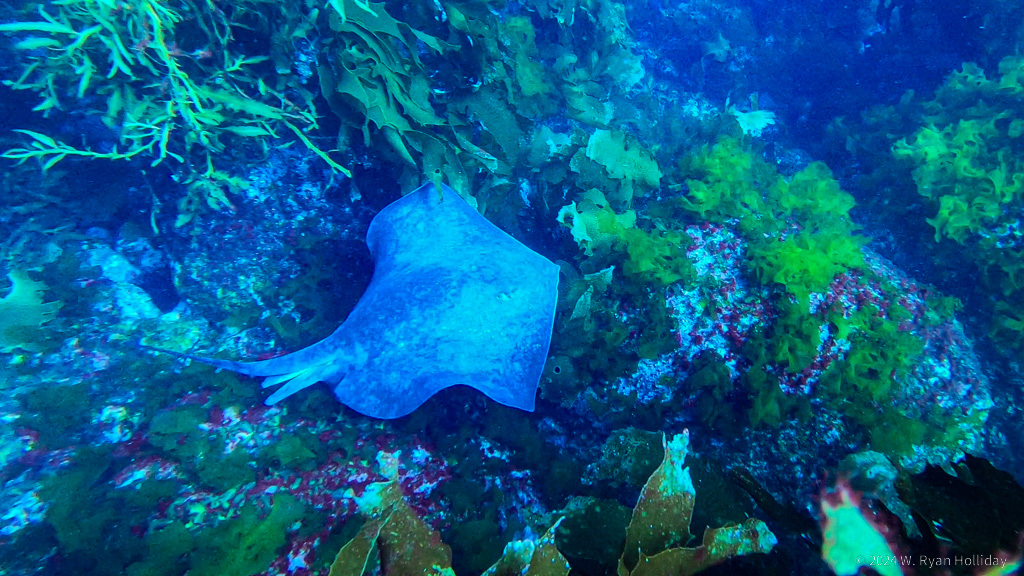We saw more koalas today than kangaroos, but we’re both OK with that.
Kangaroo Island is compared to the Galapagos Islands in some reviews for its plentiful and fearless wildlife, but the island was decimated by fires in 2020 and is still recovering, so we weren’t quite sure what to expect. So far we’re not running into hordes of unafraid animals, but we’re still seeing a lot of neat things. We’ve had wallabies bouncing by the window of our Airbnb, there are colorful cockatoos and parrots all over, and we’ve gotten the opportunity to see some of Australia’s other star species.
Our first stop this morning was to a nearby lagoon that offers a good chance of spotting koalas. We didn’t know how best to find them, so made a circuit under all of the tall eucalyptus trees. For the first hour we saw plenty of neat birds, but no koalas. As we were returning to the car we finally found one, twenty feet off the ground in the crook of a tree, dead asleep. We hung out a bit with him to see if he’d stir, but he had apparently had a big night and was totally conked out. When we were nearly back to the car I saw something odd looking in another tree, and (of course) it turned out that a second koala had been sleeping just 100 feet from where we parked. She was a bit lower to the ground and we had a better view, so it wasn’t until many more photos of a sleeping koala had been stored to memory cards that we finally departed.
From there we headed onwards to Flinders Chase National Park, which covers most of the western portion of the island but was hit the hardest by the fires; all of the buildings were burned, boardwalks and bridges on the trails were destroyed, roads were damaged, etc. Our plan was to hike a trail that has been rebuilt and is supposedly a good place to spot platypus, but after arriving we had a rather odd interaction with the ranger who was checking our park pass.
Her: “It will be dark in a few hours, so you’ve got time to see the lighthouse and the Remarkable Rocks.”
Us: “We were hoping to do the trail to see the platypus. We’ve still got more than two hours before sunset and we read that the trail shouldn’t take more than two hours.”
Her: “You won’t have time to do the trail and the Remarkables.”
Us: “How about just the trail?”
Her: “You need to be back before dark, and after visiting the Remarkables and the lighthouse there won’t be enough time.”
Us: “Ummm…”
In the end she mentioned something about no one having seen platypus lately on our planned walk, so we took a different, shorter trail with views over the ocean. We’ll likely return to the park again tomorrow, but we may skip the ranger station checkin if we do.
After leaving the park and driving the hour back to our part of the island we figured we’d give the koalas another try, and found them immediately in the same trees as this morning, still sleeping soundly. Overall not a bad way to spend a day.

